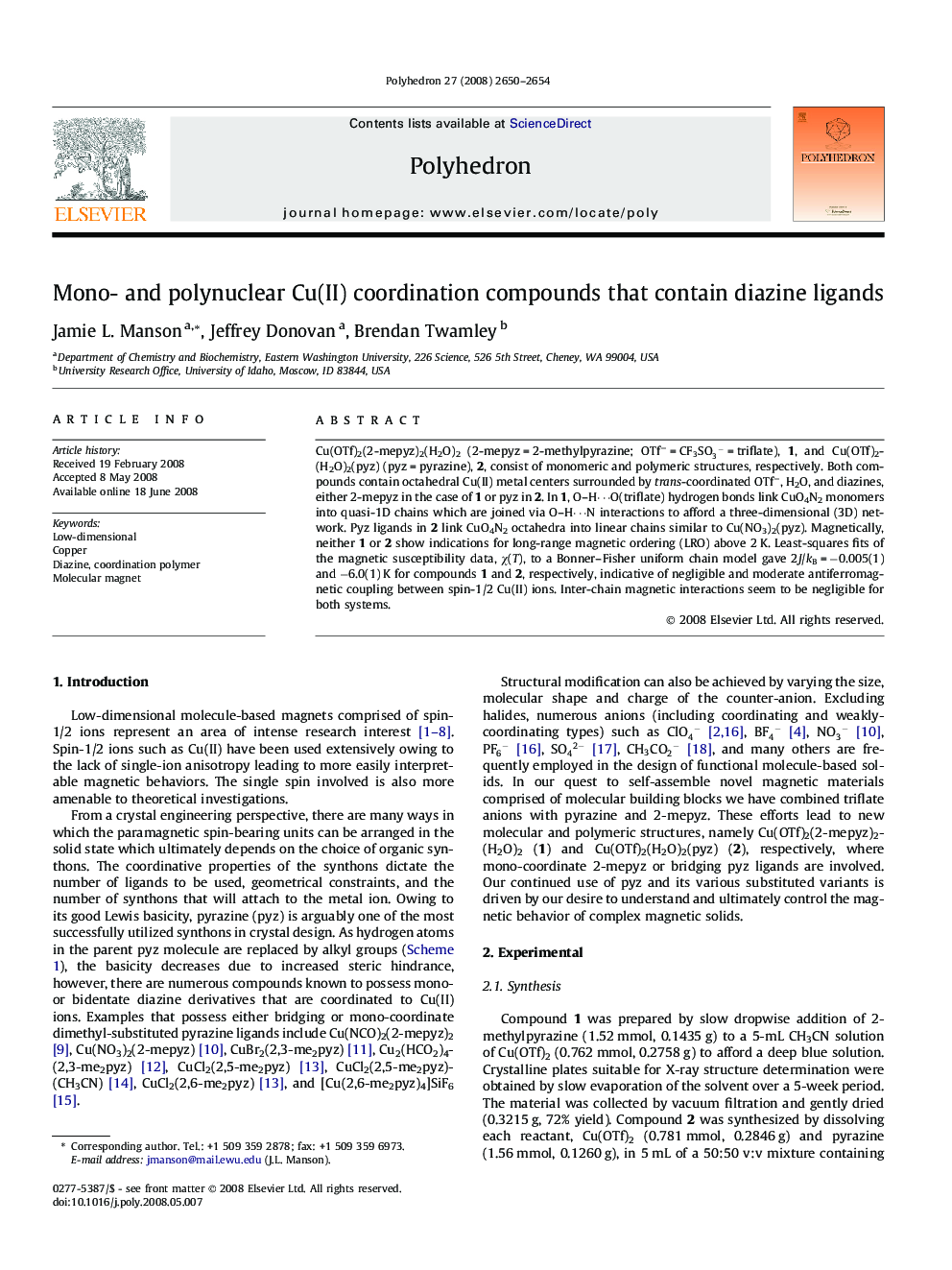| Article ID | Journal | Published Year | Pages | File Type |
|---|---|---|---|---|
| 1339266 | Polyhedron | 2008 | 5 Pages |
Cu(OTf)2(2-mepyz)2(H2O)2 (2-mepyz = 2-methylpyrazine; OTf− = CF3SO3- = triflate), 1, and Cu(OTf)2(H2O)2(pyz) (pyz = pyrazine), 2, consist of monomeric and polymeric structures, respectively. Both compounds contain octahedral Cu(II) metal centers surrounded by trans-coordinated OTf−, H2O, and diazines, either 2-mepyz in the case of 1 or pyz in 2. In 1, O–H⋯O(triflate) hydrogen bonds link CuO4N2 monomers into quasi-1D chains which are joined via O–H⋯N interactions to afford a three-dimensional (3D) network. Pyz ligands in 2 link CuO4N2 octahedra into linear chains similar to Cu(NO3)2(pyz). Magnetically, neither 1 or 2 show indications for long-range magnetic ordering (LRO) above 2 K. Least-squares fits of the magnetic susceptibility data, χ(T), to a Bonner–Fisher uniform chain model gave 2J/kB = −0.005(1) and −6.0(1) K for compounds 1 and 2, respectively, indicative of negligible and moderate antiferromagnetic coupling between spin-1/2 Cu(II) ions. Inter-chain magnetic interactions seem to be negligible for both systems.
Graphical abstractCu(OTf)2(2-mepyz)2(H2O)2 (1) and Cu(OTf)2(H2O)2(pyz) (2) are two new Cu(II) coordination compounds comprised of diazine synthons organized into quasi-2D and 1D structures, respectively. While long-range magnetic ordering was not observed for either compound, significant Cu-pyz-Cu exchange interactions were found in 2.Figure optionsDownload full-size imageDownload as PowerPoint slide
